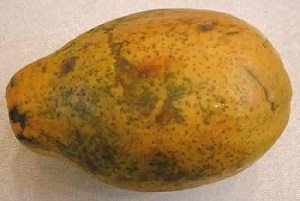 |
Select
a nice large papaya from the market, and let it fully ripen on our
counter top next to the bananas.
|
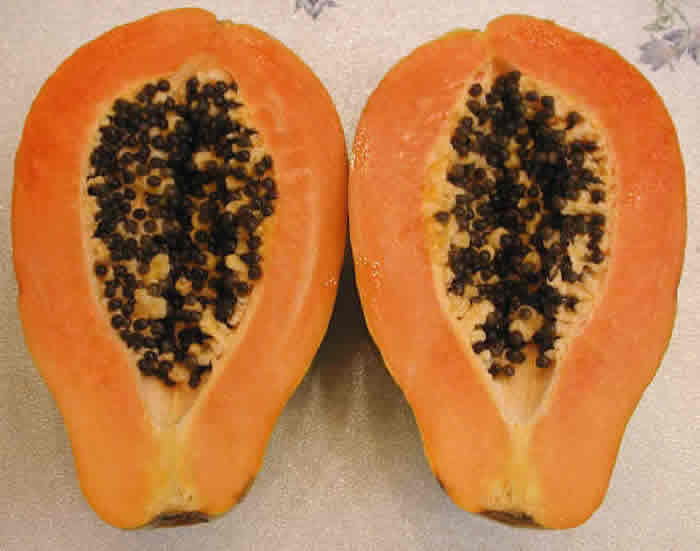 |
When
the large red papaya has fully ripened, and ready to eat, cut it in
half. Save seeds to plant in a pot.
|
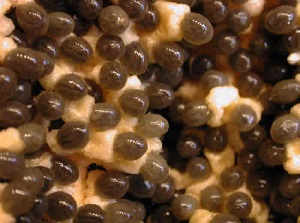 |
The
seeds, not all of them have fully ripened (darkened).
Prepare
a 6 inch diameter pot with about an inch of drainage stones on the
bottom and potting soil to fill the pot to the top. Plant the seeds
about three inches apart and about one-half inch deep, and gently
watered the soil until it was soaked. Place the pot beside the
window so it could receive plenty of sunlight, and check the soil every
day to make sure it didn't dry out, as the seeds must be kept moist. 
|
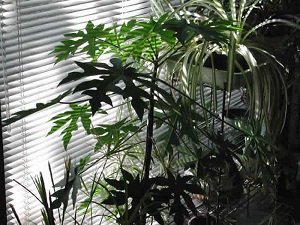 |
After
about a week the seeds began to sprout and grow into a tree with these
beautiful seven lobed leaves. 
|
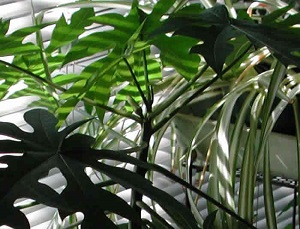 |
Flower
buds growing from the papaya tree's leaf axils at the top of the tree. 
|
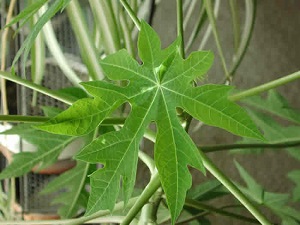 |
Papaya tree leaves. 
|
 |
In
this photo we have a closer look at the veining and other details of
the leaf construction. 
|
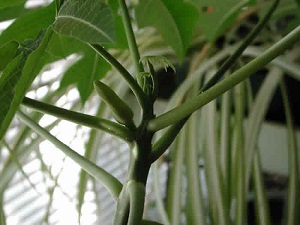 |
This
is another look at the flower buds that grow from the leaf axil of the
papaya tree. 
|
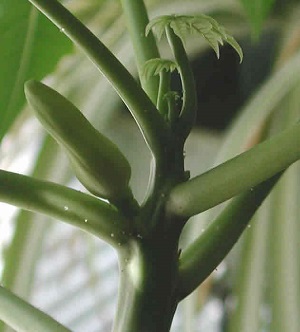 |
At
the very top of the papaya tree trunk, we can see the new leaves
sprouting, and just below them are the flower buds. The two
buds
on the right are just beginning to develop, and the one on the left is
fully developed. 
|
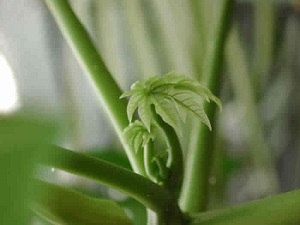 |
This
is another look at the newly sprouting leaves at the top of the papaya
tree. 
|
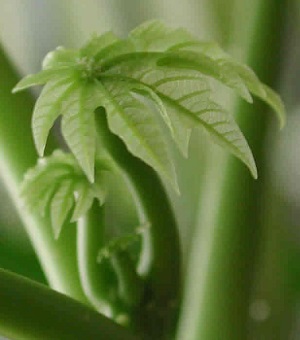 |
This
is a close up look at the newly sprouting papaya tree leaves. 
|
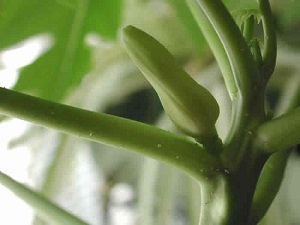 |
This is another look at a mature papaya flower bud. 
|
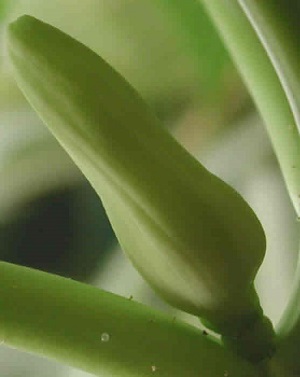 |
This
is a close up look at the mature papaya flower
bud. 
|
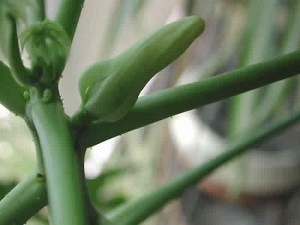 |
The
papaya flower bud begins to open. 
|
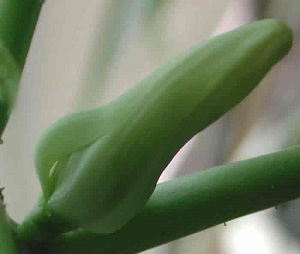 |
This
is a close up look at the papaya flower bud as it begins to open. 
|
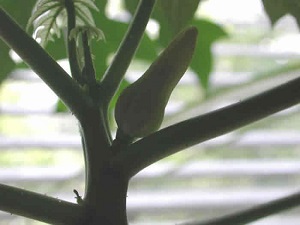 |
This
is another photo of the budding papaya tree. 
|
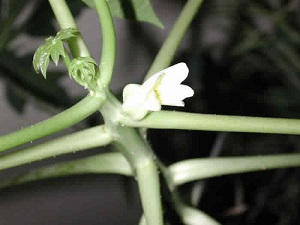 |
And
then, the next day, the papaya flower burst into bloom. 
|
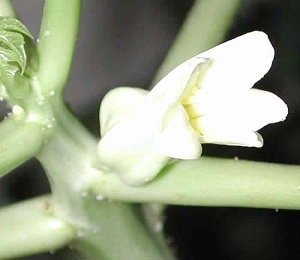 |
This is a close up look at the papaya flower. It was very
exciting for us to see this tropical tree blooming in our home. 
|
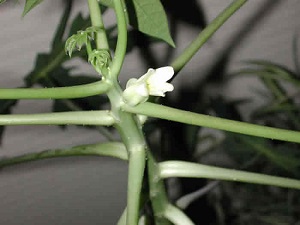 |
This
is another view of the papaya tree flower. 
|
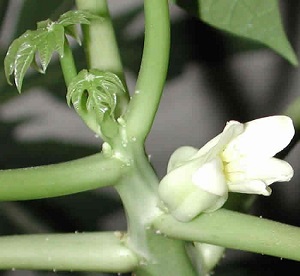 |
This
is a close up look at the top of the papaya tree with its new leaves
and flower. 
|
 |
This
is a close up look at a fully matured papaya flower. 
|
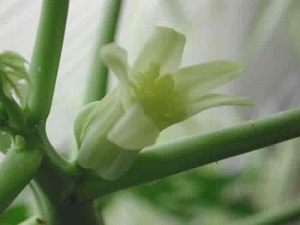 |
This
is another view of the mature papaya flower. 
|
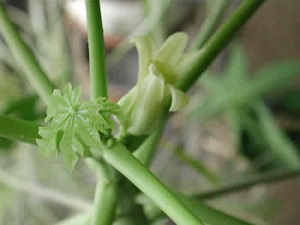 |
In
this photo, we are looking down from the top of the papaya tree at the
new leaf growth and the flower. 
|
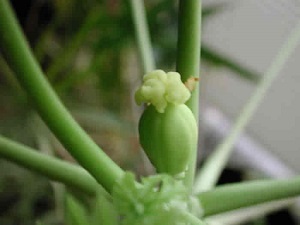 |
In this photo, we can see that the papaya flower has mostly fallen
away, and the ovary is beginning to swell into the fruit. 
|
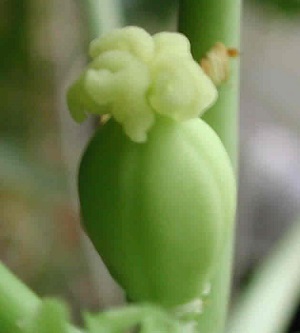 |
This
is a closer look at newly developing papaya fruit. 
|
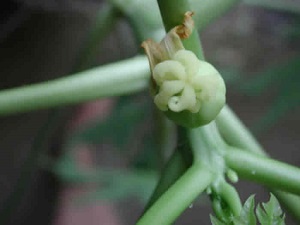 |
In
this photo, we are looking straight down at the newly developing papaya
fruit. Note the newly developing buds in the leaf axils
(below). 
|
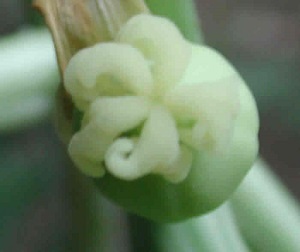 |
This
is a close up top view of a newly developing papaya fruit. 
|
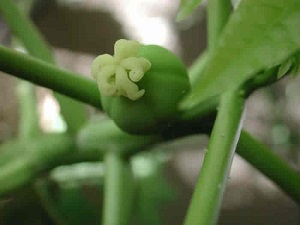 |
This
is another view of the newly developing papaya fruit. 
|
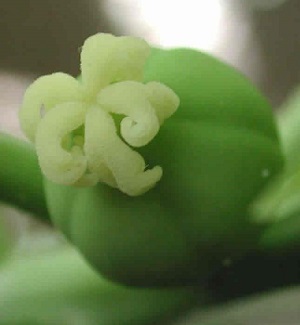
|
In
this close up look at the newly developing papaya fruit, we can see the
five pistils still clinging to the
top. 
|
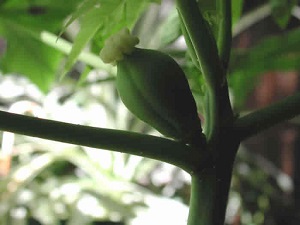 |
The papaya ovary continued to swell. 
|
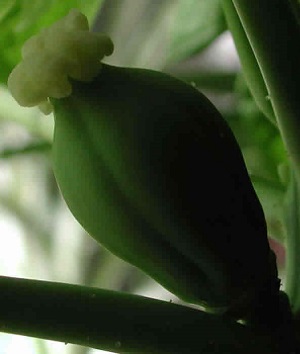 |
This
is a close up silhouette look at the swollen papaya ovary. 
|
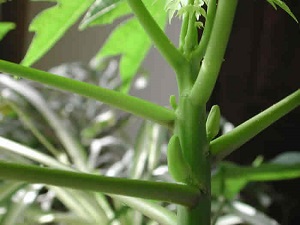 |
As
the papaya tree matured, more flower buds began to develop in the upper
leaf axils. 
|
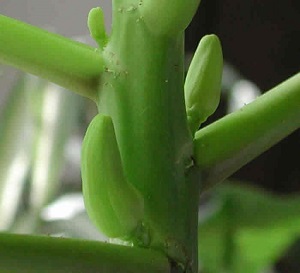 |
This
is a closer look at the newly developing papaya buds. 
|
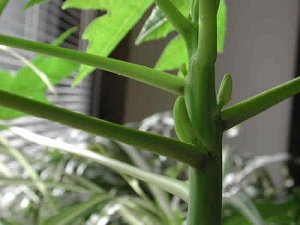 |
This
is another look at the newly developing papaya flower buds. 
|
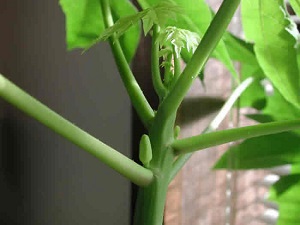 |
There
are almost always new flower buds developing on the papaya tree. 
|
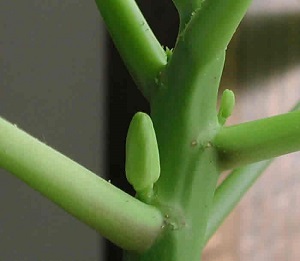 |
This is a closer look at the newly developing flower buds. 
|
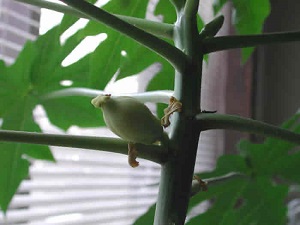
|
Unfortunately,
the swollen papaya ovaries never mature into fruit, because they have
not been fertilized by the pollen from a male papaya
flower. It
appears that our papaya tree is only a female. 
|
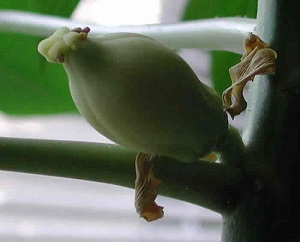 |
From
what we have learned, papaya trees can be either male or female, or
they can have both sexes on the same tree. Since our tree is
only
female, and we don't have a male tree to fertilize the female flowers,
the ovaries begin to wither and sag, and then fall off the tree. 
|
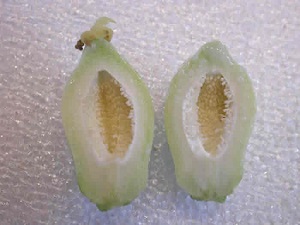 |
We
open one of the fallen undeveloped papaya fruit and it to be a
miniature of the mature fruit, except that the seeds have never
developed. 
|
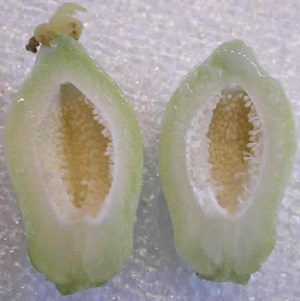 |
This
is a closer look at the undeveloped papaya
fruit. 
|
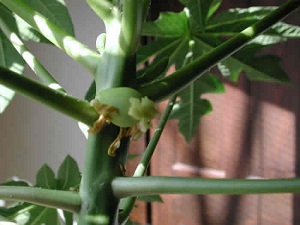 |
The
papaya tree continued to grow taller and produce more leaves and
flowers. 
|
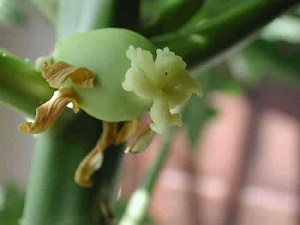 |
This is another undeveloped papaya fruit that is ready to fall off the
tree. Even though we haven't had any mature fruit from our
papaya tree,
it has still been exciting to watch it grow, and it has also become a
conversation piece for our guests. 
|
 |
This
is another look at the undeveloped papaya
fruit. 
|
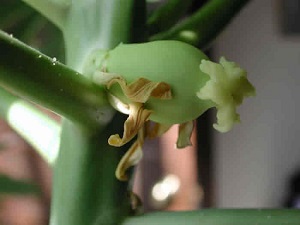 |
This
is a close up look at the remains of the papaya flower at the end of
the swollen ovary.  |
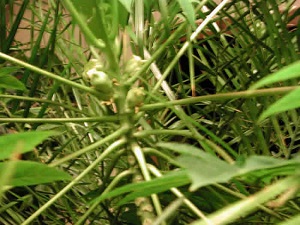 |
Our
papaya tree continued to grow until it was almost as tall as our
sliding glass door.
When the papaya grew to the top of the sliding glass door, we
transplanted it to the planter in the center of our home.  |
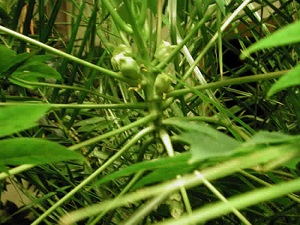 |
The
papaya tree continued to thrive under the skylights and the Spring of
2007 it was nearly eight feet tall. In the background can be
seen
the palm bows of our date palms, but that is a story for another photo
journal. 
|
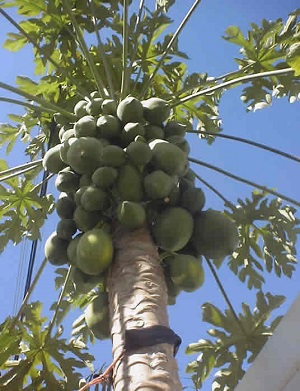 |
On
21 Mar 2008, Linda J. Kopie sent us this photo and note: Hi, I planted
this tree in my yard in Florida almost 3 years ago. It is 15 feet tall,
and I sent you a picture of the fruit on it. I grew the tree from a
seed. It is so tall, I can't reach the fruit without a 12 foot ladder. 
|
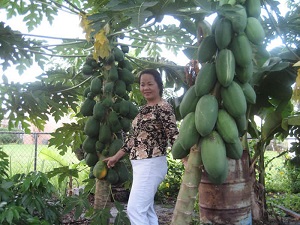 |
On
12 Dec 2010, Robert Magbanua sent us this photo and wrote: Hi Frank,
Our 1-yr old papayas, which we planted in our yard in south Florida
from the seeds of a papaya we purchased in a supermarket, have started
to ripen. We let them fully ripen on the tree and harvest them when
yellow. That way it is sweet and save space inside the house. We used
to dig holes around them for organic trash like vegetable peelings and
other compost materials. Papayas are great for the digestive system and
if you are constipated these are natural laxatives. Bob
 |
















































